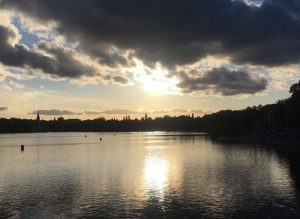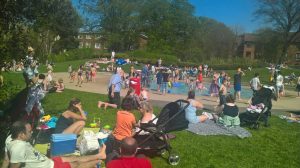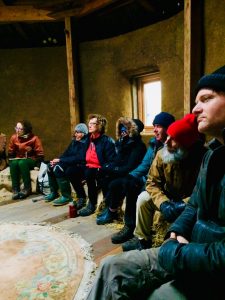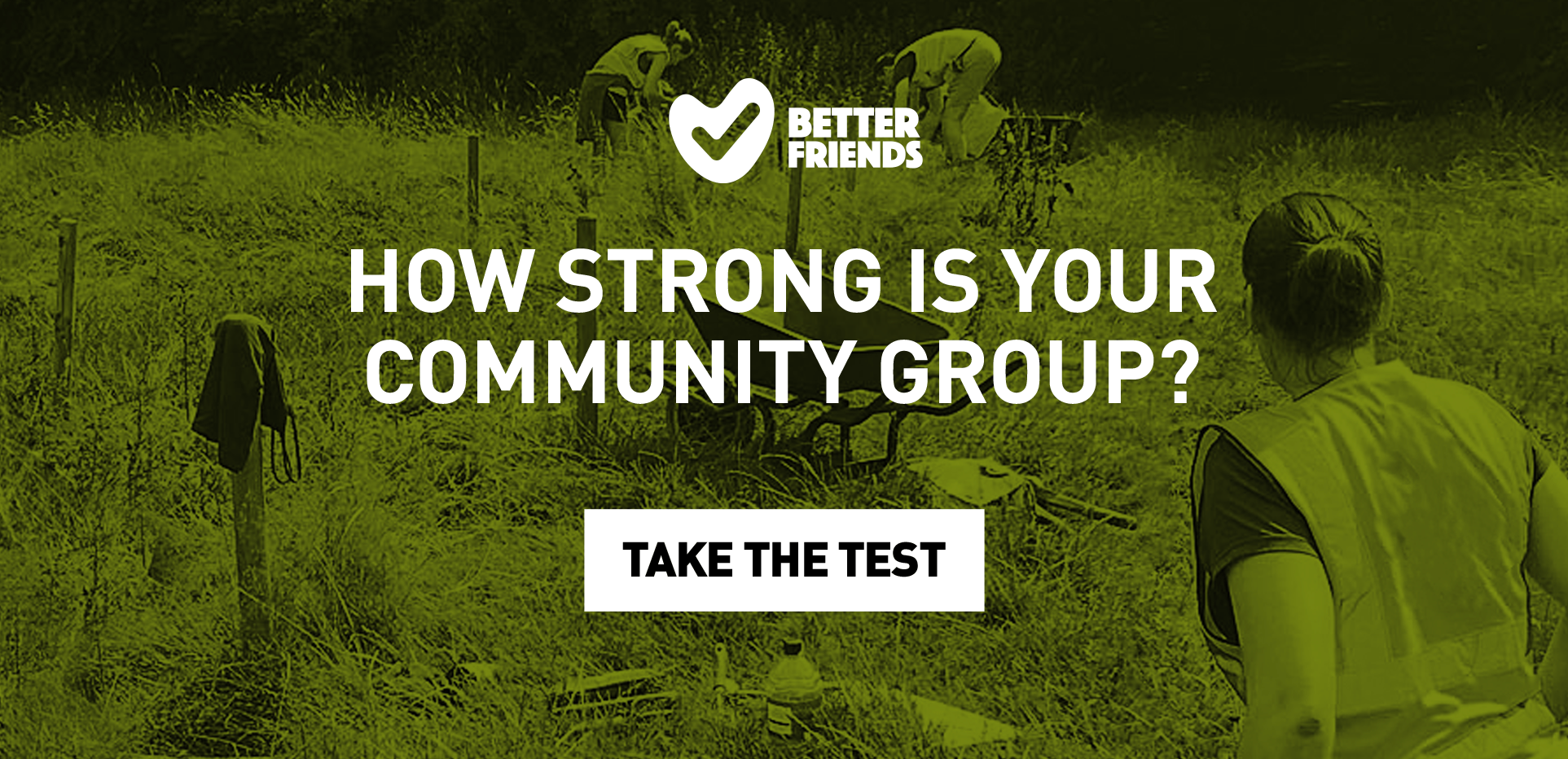Friends of parks or community groups often act as a focal point for volunteers and locals to share their photographs of a cherished park or green space. Many older images have been taken by local people whose families have lived in the area for generations. They can provide evidence to illustrate the history of a site and are often accompanied by fascinating stories, all of which can help to bring neighbourhoods together. Many areas have local archives or historical societies who make a real effort to archive digital or physical photographs for viewing, sharing or reproduction in publications or for digital projects.
It can be well worth the effort to request photographs of your site. This could be archive images or new photos from recent events. People are usually very receptive and enjoy sharing their memories with others who have a deep connection with the park and it can often be rewarding as old photos are unearthed showing previously unseen scenes. If your group has a website, this can be a useful place to store and share these images.
Images could include those of past events or significant times in the park’s history, as well as images with more personal significance, perhaps of people’s families and friends using the park.
You may get enough photographs to create a photographic exhibition, this could link in with an event or significant date, with the possibility of extending it as part of a museum or gallery display. There could also be a competitive element to encourage people to take part, with a prize or vote to pick a winner.
Often Friends Groups will compile many of the best images and produce a calendar, postcards or greetings cards, profits could be spent on the site to improve facilities or run an event.
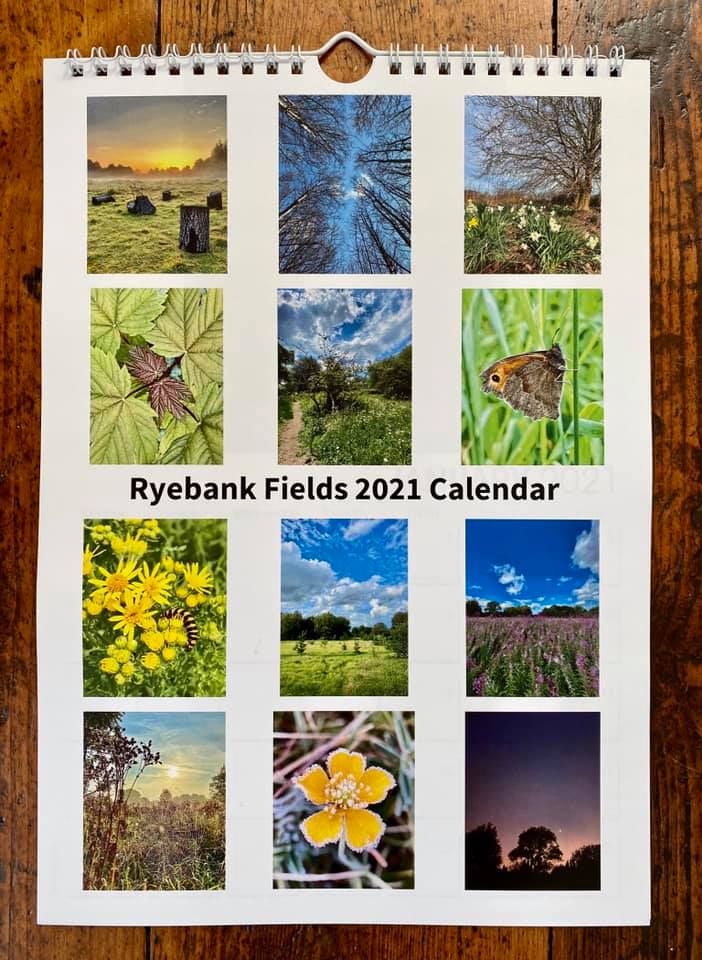
How to organise a competition
Generate interest and promote the competition at least one month before the event.
- Contact local schools, clubs and societies;
- Promote in local media such as local papers and radio asking for photo contributions;
- Ask the local newspapers if they have any photographs of the park in their archives;
- Work with the local authority, culture or museum department and the local history section of the library;
- Contact the Local History Group for their input;
- Contact local businesses for sponsorship or to offer a prize.
Collect the photographs
- Ask people to send photos with name and address on reverse to a main contact person in the local authority or Friends group; Note: any information should not be on the photo itself but rather on a label which is written and then attached to the card;
- People may prefer to share their image digitally via email or a link. Make it clear where they should send the image and what information you need;
- Ask people to include a description of who is in the photo and its significance;
- Set a deadline and decide on a judging panel if you are holding a competition;
- Decide on the winner and notify before the event if necessary.
Decide on the practical display methods
- Find a display venue (within a nearby museum, gallery, café or within the park if you have a community space or cafe or perhaps outside within the park itself);
- If the display will be outside, you will need to organize a tent or gazebo for the display or print the images on weatherproof materials;
- Obtain display boards, mounting materials and lamination material if necessary.
Assemble the display
- Mount the selected images on display boards and label with information if necessary;
- Decide on winners if it is a competition. Will this be judged on the day or decided before?
- If taking place indoors, put the display up a few days before. It may have more impact to unveil the exhibition on the morning of the event and then leave it up for a period after the event;
- If taking place outside, put up on the morning of the event.
Take down the display
- If the event is semi-permanent, work with the local authority;
- Take down the display boards;
- Return the photographs to entrants if necessary;
- Send details of the winner to the local media.
Tips and issues to consider
Make it clear that you will return the photos if a stamped addressed envelope is enclosed. Name and address should be put on a label on the back of the photo. Do not write on the back of the photo because it can damage the photo.
If people would prefer to send the photograph digitally, that is the best way, then they keep control of what could be a precious photo.
Make clear that you would like permission to copy the photograph as part of a permanent archive.
Consider arranging with the local history department of the central library or local libraries, or the local history or heritage society to act as a central collection point. They would be able to scan the photos and return them immediately.
Whoever is collecting the images will need to take responsibility for photograph release forms. As well as collecting contact details of the person submitting the photo, these forms will contain tick boxes asking whether they are happy for the image to be displayed publicly and to be used for other purposes (such as promotional material about the park or the Friend’s group).
Make it clear that the photographs will be on public display and people should not submit them if they do not want the people in the photos to be seen by the public.
Ask whether people will agree to their photographs being used for other purposes, eg for Friends promotional material. This could be a condition of entry or could involve the entrants ticking a box.
Consider displaying the images through a computer projection (if they are stored on a DVD or pendrive). This could create a constant loop or slideshow of different images which can be displayed during the event. This will require a screen and projector and a room or marquee.
Display could go from event to a display in the central library, local library or the heritage centre.
Consider asking people to collect photographs the following day from a collection point in a museum or council offices if they are not being used for a longer display.
Make it clear that not all the images entered will be displayed (unless this is possible).
Make it clear that you will not display any images which may cause offence to viewers.
Contact local papers to see if they have any photographs in their archives.
Make it clear that the decision of the organisers is final in terms of deciding a winner (if necessary) and which images are displayed.
Make sure the photo quality is sufficient (ie in terms of composition but specifically in terms of image quality and size). Consider specifying a minimum size of photograph for hard copies and in terms of resolution for digital images. Larger images will require higher quality photographs. However, the quality of some older photos will be lower and may be smaller. Some images of low quality will still have a great deal of personal meaning and could also still have a great deal of value for inclusion within the exhibition.
Consider whether you will accept both digital and conventional photographs. If digital ones are submitted who will print these out and how will this be funded?
Consider whether one display and one competition is sufficient or whether adult, amateur, professional and children’s categories would be more appropriate.
Consider whether you would also like to include paintings, postcards or newspaper cuttings within the display or as a separate stand.
Consider having a specific theme for the types of photographs, or whether the park in general is sufficient (eg sport, events, architecture, children, etc.).
Useful organisations to work with
Local photographic shops – to get sponsorship or a prize for the winner, (eg vouchers or a camera); or to use as a partner in the exhibition, (eg to scan and collect photographs from entrants.)
National photographic companies for sponsorship or promotion.
Local or regional amateur photographic clubs to get promotion or further involvement and help, such as supplying archived images. The club could run a workshop on photography.
Local history societies to provide interpretation of the photographs (a member could provide information about the displays in person).
Local schools, linking in with the national curriculum and the history lessons. They could contribute photos and use the display as part of their work.
Photography departments of the local papers, colleges, libraries and museums. They could supply archived photos for the display or could run a workshop on photography or hold a ‘career in photography’ lecture.
Other ideas to link to
Mobile phone photo competition for children and young people who can send their photos to a central number and have them put on a website or linked to the main display on the day. You will have to consider whether you want to be seen to encourage children to use mobile phones, which is potentially a controversial issue.
Displays in museums (to be developed as a semi-permanent home for the display). This can also be linked to interpretation boards within the park.
Talks, seminars, lectures, workshops about the park. The photographs could be used as topics for talks. Workshops on historical or landscape photography could be run by a local amateur photography society.
Tours of the park. This could involve tours visiting the sites of some of the photographs.
What to do it if rains
Hold the display in a museum, shop, café, or buildings adjacent or within the park. This will also mean that there is a chance to leave display for longer. This will need to be planned in advance.
Hire a marquee or gazebo to provide cover (the local authority may be able to supply equipment).
Laminate any copies of photos to waterproof them. Note: Not the originals without agreement.
What to do next
Make the display a permanent feature of a museum or gallery local to the park.
Develop a website about the park with the photos displayed on it. This could also be linked to an existing website, (eg local authority run or one by the Friends groups). Ensure that none of the images are copyrighted.
Use the photos for interpretation material about the park, eg leaflets, websites or interpretation boards.
Where to get further information
Mount boards and display boards
- Craft Arts – an online crafts store – www.craftyarts.co.uk
- Internet Stationers – www.internet-stationers.co.uk
- Local arts and crafts shops
Photographic information and supplies
- Amateur Photographer Magazine – www.amateurphotographer.com
- Better Photos – www.betterphotos.cjb.net

Reproduced with permission of North West Parks Friends Forum



